warfare / 33 strategies - booknotes

Summary:
This document presents "The 33 Strategies of War," a guide authored by Robert Greene that outlines various strategies for effective conflict resolution and warfare, emphasizing the importance of strategic thinking in overcoming adversaries and navigating interpersonal conflicts.
Outline
- 1. Preface
- 2. Part I: Self-Directed Warfare
- 1.1 Declare War on Your Enemies
- 1.2 Do Not Fight the Last War
- 1.3 Amidst the Turmoil of Events
- 1.4 Create a Sense of Urgency and Desperation
- 3. Part II: Organizational (Team) Warfare
- 2.1 Avoid the Snares of Groupthink
- 2.2 Segment Your Forces
- 2.3 Transform Your War into a Crusade
- 4. Part III: Defensive Warfare
- 3.1 Pick Your Battles Carefully
- 3.2 Turn the Tables
- 3.3 Create a Threatening Presence
- 3.4 Trade Space for Time
- 5. Part IV: Offensive Warfare
- 4.1 Lose Battles but Win the War
- 4.2 Know Your Enemy
- 4.3 Overwhelm Resistance with Speed
- 4.4 Control the Dynamic
- 6. Part V: Unconventional (Dirty) Warfare
- 5.1 Weave a Seamless Blend of Fact and Fiction
- 5.2 Take the Line of Least Expectation
- 5.3 Occupy the Moral High Ground
- 5.4 Deny Them Targets
Glossary
| Term | Definition |
|---|---|
| 1. Strategy | A plan of action designed to achieve a long-term or overall aim, particularly in competitive or conflict situations. |
| 2. Guerrilla Warfare | A form of irregular warfare that uses unconventional tactics such as ambushes and sabotage, typically by smaller groups against larger forces. |
| 3. Counterattack | A response to an adversary's attack, with the intention to regain control and/or retaliate effectively. |
| 4. Morale | The confidence, enthusiasm, and discipline of a person or group, often impacting their ability to succeed in conflict or competition. |
| 5. Passive-Aggression | A behavior characterized by indirect resistance to the demands or expectations of others, often manifesting as procrastination or deliberate inefficiency. |
| 6. Alliance | A formal agreement or relationship between parties, often for mutual benefit, especially in strategic planning or warfare. |
| 7. Perception Management | The act of influencing how others perceive situations or actions to control narratives and outcomes. |
| 8. Diplomacy | The art of managing international relations through negotiation and dialogue, often used to prevent or resolve conflicts. |

Summary:
This document discusses the importance of recognizing enemies in life and politics, as derived from Xenophon’s narrative about Greek mercenaries and Margaret Thatcher’s leadership. It emphasizes that clarity about adversaries fuels motivation and purpose, transforming passive individuals into determined activists. The text underscores that enemies define one's identity and direction, and provides historical examples to illustrate successful applications of this strategy in overcoming obstacles.
Outline
- 1. Introduction to the Polarity Strategy
- 1.1 Concept of Identifying Enemies
- 1.2 Historical Context: Xenophon and the Greek Mercenaries
- 1.2.1 The Cross of the Persian Empire
- 1.2.2 Xenophon’s Realization and Leadership
- 1.3 Political Application: Margaret Thatcher
- 1.3.1 Thatcher’s Rise to Power
- 1.3.2 The Falklands War and its Impact on Leadership
Glossary
| Term | Definition |
|---|---|
| - **Polarity Strategy** | A method of defining one’s goals and motivations in opposition to identifiable enemies or obstacles. |
| - **Mercenaries** | Soldiers hired to serve in a foreign army; in this context, Greek soldiers assisting Cyrus against Ataxerxes. |
| - **Xenophon** | An ancient Greek historian and philosopher who chronicled the Anabasis, detailing the journey of Greek mercenaries. |
| - **Ataxerxes** | The Persian king against whom Cyrus and the Greek mercenaries conspired. |
| - **Treachery** | Acts of betrayal or deceit; notably employed by Tissaphernes towards the Greek commanders. |
| - **Outsider** | A person who is not part of or integrated into a certain group; in this case, used to describe Thatcher's position in a male-dominated political landscape. |
| - **Socialists** | Political opponents of Thatcher representing leftist ideologies, which she actively opposed. |
| - **Falklands War** | A conflict between Britain and Argentina in 1982 over the Falkland Islands, showcasing Thatcher's assertive leadership. |
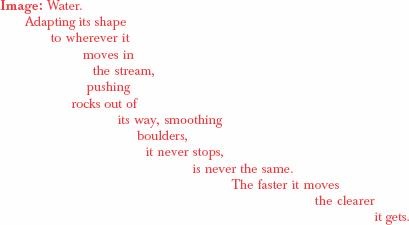
Summary:
This document discusses the concept of adapting one’s strategies to present circumstances rather than relying on past successes, illustrated through historical examples such as Napoleon’s defeats of Prussian generals and Miyamoto Musashi’s duels. It emphasizes the importance of flexibility and creativity in warfare and strategy, warning against the dangers of rigid adherence to outdated methods.
Outline
- 1. Introduction to Strategy
- 1.1 The Importance of Present Awareness
- 1.2 Fighting the Last War: A Historical Perspective
- 2. The Last War: Prussia vs. Napoleon
- 2.1 Prussian Generals’ Miscalculations
- 2.2 The Battle of Jena and Its Consequences
- 3. The Present War: Lessons from Miyamoto Musashi
- 3.1 Musashi's Adaptation in Combat
- 3.2 Key Principles of Strategy
- 4. Conclusion: Embracing Change and Flexibility
Glossary
| Term | Definition |
|---|---|
| - **Guerrilla War of the Mind** | A strategy that emphasizes fluidity, adaptability, and the rejection of past, outdated patterns of thinking in response to current challenges. |
| - **Oblique Order of Battle** | A military tactic employed by Frederick the Great to attack enemy flanks; it became ineffective when confronted by Napoleon’s dynamic strategies. |
| - **Napoleonic Myth** | The perception of Napoleon as a military genius, which was challenged by rigid Prussian generals during the 1806 war. |
| - **Tactics** | The methods and strategies used to achieve specific military objectives in battle. |
| - **Adaptability** | The capacity to modify one’s strategies and methods to effectively respond to changing circumstances and opponents. |
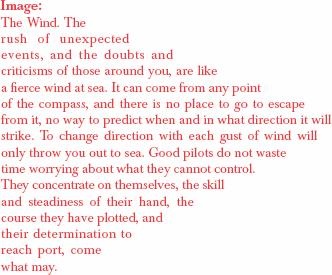
Summary:
This document discusses the importance of maintaining presence of mind during tumultuous events, highlighting historical examples such as Lord Nelson's decisive strategies in naval battles and Alfred Hitchcock's calmness on film sets, emphasizing that decisive action and thorough preparation are essential for overcoming challenges and achieving success.
Outline
- 1. Introduction
- 1.1 Importance of Presence of Mind
- 1.2 Emotional Challenges in Crisis
- 2. The Counterbalance Strategy
- 2.1 Definition and Significance
- 2.2 Historical Example: Lord Nelson
- 2.2.1 Context of Nelson's Leadership
- 2.2.2 Actions Taken by Nelson
- 3. The Hyperaggressive Tactic
- 3.1 Definition and Application
- 3.2 Examination of Nelson's Leadership Decisions
- 4. The Detached-Buddha Tactic
- 4.1 Overview of Hitchcock’s Methodology
- 4.2 Preparation and Control in Film Directing
- 5. Conclusion
- 5.1 Key Takeaways on Presence of Mind
- 5.2 Final Thoughts on Leadership in Crisis
Glossary
| Term | Definition |
|---|---|
| 1. Presence of Mind | The ability to remain calm and maintain mental clarity in stressful or chaotic situations. |
| 2. Hyperaggressive Tactic | A strategic approach that emphasizes aggressive action to seize initiative and overcome hesitations. |
| 3. Detached-Buddha Tactic | A method of managing chaos by remaining calm, collected, and unaffected by external pressures or disturbances. |
| 4. Counterbalance Strategy | An approach that involves intensifying one’s determination and confidence to counteract fear and hesitation. |
| 5. Momentum | The force gained by the development of events, which can carry one through challenges. |
| 6. Tactical Leadership | The ability to effectively plan and execute strategies in a crisis while motivating and directing others. |

Summary:
This document outlines the "Death-Ground Strategy," a psychological approach to overcoming self-imposed limitations by creating a sense of urgency and necessity, exemplified by historical figures like Hernan Cortes and Fyodor Dostoyevsky. The strategy emphasizes cutting ties to safe options and immersing oneself in present challenges, ultimately requiring one to fight for survival and success.
Outline
- 1. Introduction to the Death-Ground Strategy
- 1.1 Concept Explained
- 1.2 Importance of Urgency
- 2. Historical Example: Hernan Cortes
- 2.1 Background and Ambition
- 2.2 Initial Challenges
- 2.3 The No-Return Tactic Implementation
- 3. Historical Example: Fyodor Dostoyevsky
- 3.1 Early Life and Career
- 3.2 Arrest and Sentence
- 3.3 Transformation in Prison
- 4. Psychological Insights on Desperation
- 4.1 The Role of Necessity
- 4.2 Focus on the Present
- 5. Conclusion
- 5.1 Lessons Learned
- 5.2 Practical Applications of the Strategy
Glossary
| Term | Definition |
|---|---|
| - **Death-Ground Strategy** | A method of creating urgency by placing oneself in a situation with no option to retreat, forcing maximum engagement with present challenges. |
| - **No-Return Tactic** | A strategy that involves removing escape routes or fallback options to compel full commitment to a goal. |
| - **Desperation** | A state of extreme urgency and necessity, which can drive individuals to act with greater intensity and focus. |
| - **Cortes** | Hernan Cortes, a Spanish conquistador known for his expedition that led to the fall of the Aztec Empire in Mexico. |
| - **Dostoyevsky** | Fyodor Dostoyevsky, a Russian novelist who found renewed purpose in life after facing execution, later writing significant literary works in prison. |
| - **Conquistador** | A term used to describe Spanish explorers and soldiers who conquered territories in the New World during the age of exploration. |
| - **Tenochtitlan** | The capital of the Aztec Empire, located in present-day Mexico City, known for its complex architecture and society. |
| - **Urge** | A strong desire or impulse to take action in the face of adversity. |
| - **Siberia** | A vast region in Russia known for its harsh climate and as a place of political exile or punishment. |

Summary:
This document examines the complexities of leadership within military operations, particularly during World War I’s Gallipoli campaign, highlighting the need for clear communication, adapted leadership styles, and a robust chain of command to avoid failures associated with Groupthink and vague orders.
Outline
- 1. Introduction to Leadership in Groups
- 1.1 Challenges in Command
- 1.2 Importance of Adaptation to Team Dynamics
- 2. Case Study: The Gallipoli Campaign
- 2.1 Background to the Campaign
- 2.2 The Invasion Strategy
- 2.2.1 Initial Landings at Gallipoli
- 2.2.2 Issues with Command and Control
- 2.3 The Suvla Operation
- 2.3.1 Leadership Choices and Challenges
- 2.3.2 Chain of Command Failures
- 3. Lessons Learned from Leadership Failures
- 3.1 Importance of Clear Communication
- 3.2 Adapting Leadership Style to Subordinates
- 3.3 Constructing an Effective Chain of Command
- 4. Parallel Analysis: General George C. Marshall
- 4.1 Reforming Military Leadership
- 4.2 Building a Cohesive Team
- 4.3 Effective Communication Techniques in Command
Glossary
| Term | Definition |
|---|---|
| - **Groupthink** | A psychological phenomenon that occurs within a group of people, characterized by the consensus-seeking behavior that can lead to irrational decision-making. |
| - **Chain of Command** | The hierarchical structure within an organization that dictates how orders are passed down and how communication flows. |
| - **Stalemate** | A situation in conflict where neither side can gain an advantage, leading to a deadlock. |
| - **Artillery** | Large-caliber guns used in warfare on land, essential for bombarding enemy positions. |
| - **Amphibious Assault** | A military operation launched from the sea by naval and landing forces to secure a shore. |
| - **Reconnaissance** | The exploration of an area to gather information, often related to enemy positions or terrain. |
| - **Cohesion** | The action or fact of forming a united whole, crucial for the effectiveness of military forces in battle. |
| - **Strategist** | An individual skilled in planning and directing large-scale operations and movements in military contexts. |
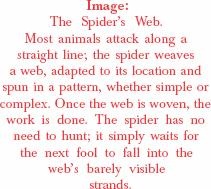
Summary:
The document discusses Napoleon's innovative military strategy of decentralizing forces for greater speed and adaptability, contrasting this approach with traditional centralized command structures that inhibit flexibility and responsiveness, ultimately leading to strategic advantage in warfare.
Outline
- 1. Introduction to Strategy
- 1.1 Importance of Speed and Adaptability
- 1.2 Historical Context of Warfare
- 2. Napoleon’s Controlled-Chaos Strategy
- 2.1 Decentralization of Forces
- 2.2 Flexibility and Independent Operations
- 2.3 Comparison with Traditional Command
- 3. The Battle of Ulm
- 3.1 Background and Planning
- 3.2 Austrian Strategy and General Mack’s Mistakes
- 3.3 Outcome and Implications
- 4. Organizational Dimensions of Strategy
- 4.1 The Role of Military Organization
- 4.2 Historical Examples of Successful Command Structures
- 5. Conclusion: Lessons for Modern Warfare
- 5.1 The Importance of Fluidity
- 5.2 Strategic Depth and Options in Warfare
Glossary
| Term | Definition |
|---|---|
| - **Controlled-Chaos Strategy** | A military approach that emphasizes decentralized command and adaptable forces, allowing independent units to operate flexibly in dynamic situations. |
| - **Corps** | A strategic military unit, typically comprising several thousand troops, organized under a single command to achieve specific objectives. |
| - **Shih** | A strategic position of potential force, where options are maximized in response to enemy actions, enabling dynamic and unpredictable movement. |
| - **Auftragstaktik** | A German military concept meaning mission tactics, where subordinate commanders act autonomously based on the situation rather than waiting for orders. |
| - **Centralized Command** | A traditional military structure in which decision-making authority is concentrated at the top levels, usually resulting in slower response times and reduced adaptability in combat scenarios. |
| - **Linear Strategy** | A straightforward approach to military operations, often involving direct, predictable maneuvers, which can be countered easily by an agile opponent. |
| - **Fluidity in Organization** | The quality or state of being adaptable and dynamic within military structures, allowing for rapid reconfiguration in response to changing conditions on the battlefield. |
| - **Military Doctrine** | A framework of principles and strategies that guide military operations and decision-making, evolving from historical lessons and changes in warfare practices. |

Summary:
The document outlines strategies for enhancing troop morale in military contexts by fostering a sense of unity around a common cause, addressing material needs, and employing effective leadership techniques, including emotional appeals, balanced punishment and reward, and the establishment of group identity.
Outline
- 1. Introduction to Morale Strategies
- 1.1 Importance of Group Identity
- 1.2 Role of Leadership in Morale
- 2. The Art of Man Management
- 2.1 Understanding Human Nature
- 2.2 Common Pitfalls in Leadership
- 3. Eight Steps to Enhance Group Dynamics
- 3.1 Unite Around a Cause
- 3.2 Material Needs
- 3.3 Lead from the Front
- 3.4 Concentrate Ch’i
- 3.5 Play to Emotions
- 3.6 Mix Harshness and Kindness
- 3.7 Build the Group Myth
- 3.8 Dealing with Grumblers
- 4. Historical Examples
- 4.1 Oliver Cromwell’s Military Leadership
- 4.2 Analysis of Successful Strategies
Glossary
| Term | Definition |
|---|---|
| - **Morale** | The confidence, enthusiasm, and discipline of a group, particularly in a military context. |
| - **Man Management** | The art of overseeing and motivating troops to ensure cohesion and effective performance. |
| - **Ch’i** | A concept originating from Chinese philosophy representing energy inherent in all living things, important for maintaining group spirit and productivity. |
| - **Cohesion** | The bond that holds a group together, essential for effective teamwork and morale. |
| - **Group Myth** | The shared identity and belief system that develops among members of a group, often built through shared experiences and traditions. |
| - **Emotional Appeal** | A persuasive technique that targets the feelings of individuals to motivate them, rather than relying solely on logical arguments. |

Summary:
The document examines the importance of strategic decision-making in warfare through the historical examples of King Pyrrhus and Queen Elizabeth I, emphasizing the necessity of understanding one’s limitations, attacking weaknesses, and maintaining economic stability to ensure long-term success.
Outline
- 1. Introduction to Strategy in Warfare
- 1.1 Importance of Picking Battles Carefully
- 1.1.1 Understanding Limitations
- 1.1.2 Evaluating Hidden Costs
- 1.2 Historical Examples of Strategic Warfare
- 1.2.1 Case Study: King Pyrrhus of Epirus
- 1.2.1.1 Background and Motivation
- 1.2.1.2 The Battle of Heraclea
- 1.2.1.3 The Battle of Asculum and Its Consequences
- 1.2.2 Case Study: Queen Elizabeth I of England
- 1.2.2.1 Challenges Faced
- 1.2.2.2 Economic Strategies Against Spain
- 1.2.2.3 The Defeat of the Spanish Armada
- 2. Lessons Learned from Historical Conflicts
- 2.1 Importance of Timing and Preparedness
- 2.2 Strategic Use of Strengths Against Opponent Weaknesses
- 3. Conclusion
- 3.1 The Value of Economic Warfare
- 3.2 Implications for Modern Strategy
Glossary
| Term | Definition |
|---|---|
| 1. **Pyrrhic Victory** | A victory with such a devastating toll on the victor that it negates any sense of achievement or profit. |
| 2. **Economy of Strength** | A military strategy that emphasizes using the least amount of resources to achieve the desired outcome, avoiding overextension. |
| 3. **Intelligence Agency** | An organization dedicated to gathering, analyzing, and utilizing information regarding foreign entities or potential threats. |
| 4. **Weaknesses** | Vulnerabilities or disadvantages that can be exploited by an opponent to gain an advantage in a conflict. |
| 5. **Political Goodwill** | The trust and support gained from allies or the public, which can be affected by choices made during conflicts. |
| 6. **Hidden Costs** | Unforeseen expenses or consequences that arise during an endeavor, often complicating the initial objectives. |

Summary:
This document explores the principles of counterattack strategies in warfare, emphasizing the effectiveness of waiting for the enemy to act first, deceiving opponents with false vulnerabilities, and creatively blending offense and defense to gain a tactical advantage.
Outline
- 1. Introduction to Counterattack Strategies
- 1.1 Importance of Tactical Waiting
- 1.2 The Power of Manipulation
- 2. Historical Case Study: Napoleon at Austerlitz
- 2.1 The Crisis Before Battle
- 2.2 Strategy Employed at Austerlitz
- 2.3 Outcomes and Lessons Learned
- 3. Practical Application of Counterattack Principles
- 3.1 Blending Offense and Defense
- 3.2 Psychological Manipulation of Opponents
- 3.3 Developing a Personal Strategy
- 4. Conclusion
- 4.1 Summary of Key Techniques
- 4.2 Final Thoughts on Counterattack Strategies
Glossary
| Term | Definition |
|---|---|
| - **Counterattack** | A military strategy involving a response to an attack, countering the opponent's movements to regain an advantage. |
| - **Baiting** | The act of luring an opponent into making a hasty or rash move, often resulting in their disadvantage. |
| - **Fluidity of thinking** | The ability to adapt strategies dynamically, merging offensive and defensive tactics seamlessly. |
| - **Austerlitz** | Refers to the Battle of Austerlitz, a decisive conflict where Napoleon employed cunning strategies that led to a significant victory despite being outnumbered. |
| - **Pratzen Heights** | A strategic location in the Battle of Austerlitz that was pivotal for controlling the battlefield. |
| - **Duality of defense and offense** | The concept that defense and offense are interconnected and can be maneuvered interchangeably to exploit the enemy's weaknesses. |
| - **Resilience** | The capacity to recover from difficulties and maintain strategic planning in challenging situations. |
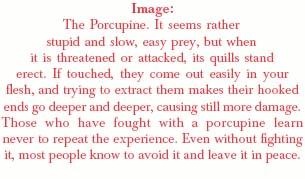
Summary:
This document explores strategies for creating a threatening presence and employing deterrence techniques to prevent aggression. It emphasizes the importance of manipulating perceptions, maintaining unpredictability, and establishing a reputation for toughness to deter potential aggressors.
Outline
- 1. Introduction to Deterrence Strategies
- 1.1 Importance of Creating a Powerful Presence
- 1.2 Role of Reputation in Deterrence
- 2. Reverse Intimidation Techniques
- 2.1 Understanding Aggressor Psychology
- 2.2 Basic Methods of Reverse Intimidation
- 2.2.1 Surprise with a Bold Maneuver
- 2.2.2 Reverse the Threat
- 2.2.3 Seem Unpredictable and Irrational
- 2.2.4 Play on People's Natural Paranoia
- 2.2.5 Establish a Frightening Reputation
- 3. Historical Examples
- 3.1 Stonewall Jackson's Campaign in the Shenandoah Valley
- 3.2 Jackie Robinson and Sal Maglie's Encounter
Glossary
| Term | Definition |
|---|---|
| 1. **Deterrence** | The act of preventing aggression or conflict by instilling fear or uncertainty in the aggressor about the potential consequences of their actions. |
| 2. **Reverse Intimidation** | A strategy of countering aggressive behavior by projecting strength and unpredictability, making it difficult for aggressors to attack. |
| 3. **Perception Management** | The practice of influencing how others view you or your group to manipulate their actions and decisions. |
| 4. **Brinkmanship** | A tactic that involves creating a high-risk situation in which one party deliberately allows the situation to become tense or precarious to force the other party to negotiate or concede. |
| 5. **Bold Maneuver** | A surprising and audacious action taken to disguise weakness and suggest confidence, influencing an opponent’s perception of threat. |
| 6. **Reputation** | The collective opinion or belief about someone’s character or abilities, which can be enhanced through strategic actions to deter aggression. |

Summary:
The document discusses the strategic wisdom of retreating in the face of a stronger enemy, emphasizing the importance of buying time for reflection and recovery rather than engaging in direct confrontation. It highlights historical examples, particularly from Mao Tse-tung's campaigns, illustrating how thoughtful disengagement leads to eventual advantage by allowing one to regroup and create a new identity and strategy. The text also addresses the contextual value of time in warfare and strategy, advocating for a calculated approach in the face of overwhelming odds.
Outline
- 1. Introduction to Nonengagement Strategy
- 1.1 Importance of Time Over Space
- 1.2 Historical Context and Examples
- 2. Case Study: Mao Tse-tung and the Communist Party
- 2.1 Early Struggles and Retreat
- 2.2 The Long March
- 2.3 Transformation of the Party Identity
- 3. Key Concepts in Retreat Strategy
- 3.1 Psychological and Physical Disengagement
- 3.2 Historical Examples of Successful Retreat
- 3.3 Authority and Discipline in Strategy
- 4. Reversal Strategy: Engaging the Enemy
- 4.1 Martyrdom as a Strategic Choice
- 4.2 Risks and Consequences of Martyrdom
- 5. Conclusion: The Imperative of Balance in Strategy
- 5.1 The Importance of Timing in Combat
- 5.2 Final Thoughts on Retreat and Engagement
Glossary
| Term | Definition |
|---|---|
| 1. **Nonengagement Strategy** | A strategic approach that involves avoiding direct confrontation with a stronger enemy to gain time for recovery and reflection. |
| 2. **Retreat** | The act of withdrawing from enemy engagement, not viewed as weakness but as a strategic maneuver to preserve resources and strengthen one's position. |
| 3. **Guerrilla Warfare** | A form of irregular warfare that relies on small groups employing tactics like ambushes and raids to resist a larger force. |
| 4. **Martyrdom** | The act of sacrificing oneself for a cause, which can serve as a rallying symbol but is typically avoided in favor of strategic retreat. |
| 5. **Taoism** | An ancient Chinese philosophy emphasizing living in harmony with the natural order, often advocating for action through inaction (wei wu). |
| 6. **Time as Commodity** | The concept that time is a valuable resource in strategy, crucial for reflection, strategy formation, and eventual engagement. |
| 7. **Friction** | An idea by Carl von Clausewitz referring to the unpredictable elements in warfare that can disrupt plans. |
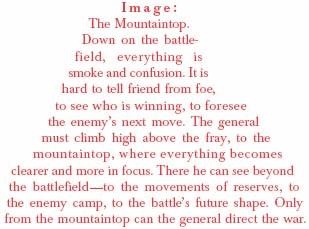
Summary:
The document explores the concept of grand strategy through historical examples, particularly focusing on Alexander the Great's military campaigns and their strategic implications, while also drawing parallels to modern warfare scenarios like the Vietnam War, emphasizing the importance of long-term vision over immediate victories.
Outline
- 1. Introduction to Grand Strategy
- 1.1 Importance of Long-Term Goals
- 1.2 Emotional Control and Strategic Thinking
- 2. The Great Campaign: Alexander the Great's Rise
- 2.1 Early Life and Influences
- 2.2 Consolidation of Power in Macedonia
- 2.3 Campaigns Against Persia
- 2.3.1 Initial Victory at the Granicus
- 2.3.2 Political Maneuvering in Egypt
- 2.3.3 Victory at Arbela
- 3. Lessons from Modern Warfare: The Vietnam War
- 3.1 U.S. Strategy in Vietnam
- 3.2 The Tet Offensive and its Implications
- 3.3 Analysis of Military Decision-Making
Glossary
| Term | Definition |
|---|---|
| 1. **Grand Strategy** | The comprehensive plan that considers long-term goals and the political repercussions of actions, rather than focusing solely on immediate battles. |
| 2. **Macedonia** | An ancient kingdom in the northern part of Greece that was ruled by Alexander the Great; significant for its military and political advancements under Philip II and Alexander. |
| 3. **Persian Empire** | A vast empire that was a major rival to Greece during Alexander's campaigns, known for its rich resources and military power. |
| 4. **Tet Offensive** | A major campaign launched by North Vietnamese soldiers and Vietcong during the Vietnamese Lunar New Year in January 1968, characterized by widespread attacks across South Vietnam. |
| 5. **Military Maneuvers** | The planned movements of armed forces during a conflict, which can include tactics for engaging the enemy or strategically positioning troops and resources. |
| 6. **Khe Sanh** | A significant U.S. Marine outpost in South Vietnam, targeted during the Vietnam War for its strategic location and role in monitoring enemy activity. |
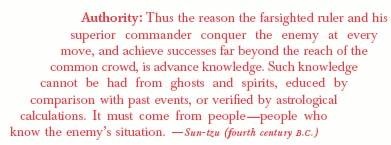
Summary:
The document analyzes historical examples of military strategy and intelligence, emphasizing the importance of understanding the minds of adversaries, recognizing psychological weaknesses, and adapting political and military actions based on cultural and individual differences.
Outline
- 1. Introduction to Psychological Warfare
- 1.1 Understanding the Enemy's Mind
- 1.1.1 The Importance of Psychological Insight
- 1.2 The Case of Lord Auckland and Afghanistan
- 1.2.1 Initial Strategy and Assumptions
- 1.2.2 Consequences of Misreading the Enemy
- 2. Historical Examples of Miscalculation
- 2.1 The Aging Lion and the Fox Fable
- 2.1.1 Lessons on Awareness and Deception
- 2.2 The Downfall of William Macnaghten
- 2.2.1 Overconfidence and Assumptions
- 2.2.2 The Ultimate Failure in Strategy
- 3. The Art of Political Manipulation
- 3.1 Napoleon and Metternich's Relationship
- 3.1.1 Charm and Strategic Alliance
- 3.2 War and Diplomatic Strategy
- 3.2.1 The Role of Personal Relationships in Politics
Glossary
| Term | Definition |
|---|---|
| - **Intelligence Strategy** | The systematic gathering and analysis of information about an adversary, focusing on psychological motivations and weaknesses. |
| - **Psychological Weaknesses** | Vulnerabilities or flaws in an opponent's mental or emotional state that can be exploited to gain strategic advantages. |
| - **Narcissism** | A psychological condition where an individual has an inflated sense of self-importance, often leading to poor judgment in understanding others. |
| - **Political Diplomacy** | The art of conducting negotiations between nations or significant political entities to achieve strategic alliances or resolutions. |
| - **Ally** | A country or group that supports another in a conflict, often involving political or military cooperation. |
| - **Civilizing Mission** | The belief or doctrine that a powerful nation has the right or duty to impose its culture and governance on less powerful nations. |
| - **Bait** | An attractive offer or incentive used strategically to persuade individuals or groups to act in a desired manner. |
| - **Ambush** | A surprise attack by people lying in wait in a concealed position, often used to exploit an enemy's weaknesses. |
Summary:
This document explores the blitzkrieg strategy, emphasizing the power of speed and surprise in military engagements, drawing on historical examples such as Genghis Khan's tactics against the Khwarizm Empire and the German invasion of France in World War II. It illustrates how effective preparation, psychological warfare, and decisive action can lead to overwhelming success against slower, more cautious opponents.
Outline
- 1. Introduction to the Blitzkrieg Strategy
- 1.1 Importance of Speed and Suddenness
- 1.2 Historical Context of Speed in Warfare
- 2. Case Study: Genghis Khan and the Khwarizm Empire
- 2.1 Initial Diplomacy and Betrayal
- 2.2 Mongol Military Tactics and Strategy
- 2.3 The Resulting Downfall of the Shah
- 3. The Blitzkrieg in Modern Warfare
- 3.1 German Invasion of France and Low Countries
- 3.2 Principles of Effective Blitzkrieg Tactics
- 4. Tactical Applications of Speed
- 4.1 Examples from Historical Figures
- 4.1.1 Julius Caesar
- 4.1.2 Franklin D. Roosevelt
- 4.2 Practical Implications in Diplomacy and Business
- 5. Conclusion
- 5.1 The Power of Suddenness and Speed
- 5.2 Final Thoughts on Strategy and Warfare
Glossary
| Term | Definition |
|---|---|
| - Blitzkrieg | A fast and coordinated military strategy that relies on speed and surprise to overwhelm the enemy, often using combined arms like tanks and airplanes. |
| - Psychological Warfare | Tactics that aim to manipulate the enemy's mental state or perception, creating confusion and fear to gain a strategic advantage. |
| - Cordon | A defensive strategy where forces are arranged to form a barrier, restricting enemy movement or access to certain areas. |
| - Momentum | The driving force gained by a physical object in motion; in warfare, it refers to the ability to maintain and build tactical advantages through swift action. |
| - Setup | A preparatory maneuver or condition designed to lull the opponent into a false sense of security before launching a decisive strike. |
| - Decisive Action | Rapid and firm military or strategic measures taken to disrupt or defeat an opponent. |
| - Coordination | The effective organization and execution of forces in a strategic manner to achieve a common objective. |
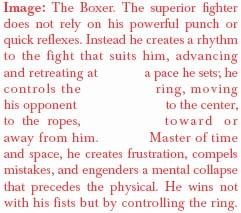
Summary:
The document discusses strategies for gaining and maintaining control in various situations, emphasizing the importance of setting the terms of engagement, manipulating emotional responses, and leveraging psychological tactics to compel opponents into mistakes or behaviors that favor the strategist.
Outline
- 1. Introduction
- 1.1 The Nature of Control
- 1.2 Purpose of the Document
- 2. Strategies of Control
- 2.1 Keeping Opponents on Their Heels
- 2.2 Shifting the Battlefield
- 2.3 Compelling Mistakes
- 2.4 Assuming Passive Control
- 3. Historical Examples
- 3.1 Rommel's Offensive Strategy
- 3.2 The Case of Mae West in Hollywood
- 4. Conclusion
- 4.1 The Importance of Initiative
- 4.2 Final Thoughts on Control in Warfare and Everyday Life
Glossary
| Term | Definition |
|---|---|
| - Control | The power to influence or direct people's behavior or the course of events. |
| - Initiative | The ability to assess and initiate things independently; taking the first action in a conflict or interaction. |
| - Terrain | The context or environment in which a conflict or interaction occurs, including physical, social, or emotional aspects. |
| - Manipulation | The act of influencing or controlling someone or something to achieve a desired outcome, often in a subtle or deceptive manner. |
| - Psychological Weaknesses | Vulnerabilities related to an individual's emotions and mental state that can be exploited to gain an advantage. |
| - Aggressive Control | A strategy that involves direct and forceful actions to dominate and destabilize the opponent. |
| - Passive Control | A method of influence where the manipulator creates an illusion of control for the other party while subtly directing the outcome. |
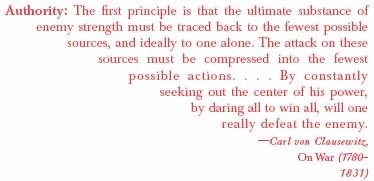
Summary:
The document analyzes historical military strategies, particularly focusing on Scipio Africanus’s campaign against Hannibal and the Carthaginians, emphasizing the importance of identifying and targeting the center of gravity—vulnerabilities that sustain an enemy's power.
Outline
- 1. Introduction to the Center-of-Gravity Strategy
- 1.1 Definition and Importance
- 1.2 Historical Context
- 2. Case Study: Scipio Africanus vs. Hannibal
- 2.1 Initial Situation and Challenges
- 2.2 Strategic Moves by Scipio
- 2.2.1 Capture of New Carthage
- 2.2.2 Campaign in Africa
- 2.3 The Turning Point: Battle of Zama
- 3. Lessons Learned from the Engagement
- 3.1 Analysis of Military Strategy
- 3.2 Relevance to Modern Conflict
- 3.3 Conclusion: Focusing on Weaknesses
Glossary
| Term | Definition |
|---|---|
| - **Center of Gravity** | The source of power or strength supporting an entity that, when targeted, can significantly weaken or incapacitate it. |
| - **Carthaginian** | Relating to Carthage, an ancient civilization located in what is now Tunisia, known for its conflicts with Rome. |
| - **Scipio Africanus** | A Roman general renowned for his innovative military strategies during the Second Punic War against Carthage. |
| - **Hannibal** | A Carthaginian general famous for his tactical genius and his crossing of the Alps to invade Italy during the Second Punic War. |
| - **New Carthage** | The capital of Carthaginian Spain, a strategic military and supply base for Carthaginian forces. |
| - **Pillars of Support** | The essential components that maintain a system or power structure, which, if weakened or destroyed, can lead to collapse. |
| - **Frontal Battle** | A direct confrontation between opposing forces, often characterized by head-on engagements. |
| - **Victory Condition** | A situation or state that signifies the successful outcome of a military campaign or battle. |
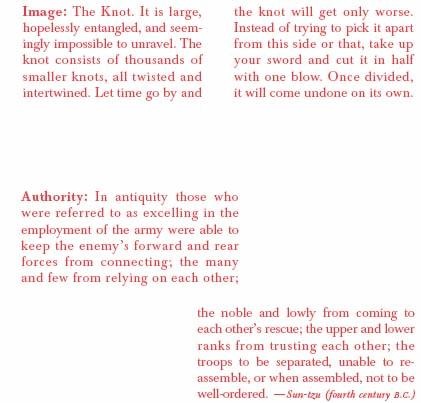
Summary:
The document discusses the principles of the divide-and-conquer strategy in military tactics, illustrating its application through historical examples such as Napoleon's central position maneuver and Miltiades' tactics at the Battle of Marathon, highlighting the importance of breaking down an enemy’s forces to achieve victory.
Outline
- 1. Introduction to Divide-and-Conquer Strategy
- 1.1 Overview of the concept
- 1.2 Importance in military tactics
- 2. Napoleon’s Use of Central Position
- 2.1 Description of the strategy
- 2.2 Historical context and examples
- 3. The Battle of Marathon
- 3.1 Context of the conflict
- 3.2 Miltiades' tactical decisions
- 3.3 Outcome and significance
- 4. Samuel Adams and the Revolutionary Tactics
- 4.1 Background of the colonial struggle
- 4.2 Strategies employed against British rule
- 4.3 The impact of public action and organization
Glossary
| Term | Definition |
|---|---|
| - **Divide-and-Conquer** | A strategy that involves breaking a large problem or opponent into smaller, more manageable parts to weaken and defeat them individually. |
| - **Central Position** | A military maneuver where one army positions itself centrally between two or more enemy forces to maximize its strategic advantages and minimize the enemies' coordination. |
| - **Blitzkrieg** | A swift and sudden military attack; in this context, it refers to Napoleon's rapid offensive strategy intended to overwhelm an opponent quickly. |
| - **Dispositions** | The arrangement or deployment of military forces in preparation for battle. |
| - **Hinge or Joint** | The vulnerable point where enemy forces' boundaries converge, making it a strategic target for attack. |
| - **Sons of Liberty** | A group formed in the American colonies to oppose British taxation and support independence through action and protest. |
| - **Taxation without Representation** | The principle that it is unfair to tax a group of people without giving them a voice or representation in the decisions of governance. |
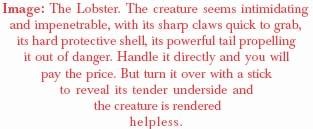
Summary:
The document explores military strategies for overcoming opponents by focusing on exploiting their vulnerabilities, particularly through indirect attacks on their flanks, drawing on historical examples from Napoleon and Julius Caesar to illustrate the effectiveness of such tactics in achieving victory with minimal resources.
Outline
- 1. Introduction to the Turning Strategy
- 1.1 Importance of Indirect Attacks
- 1.2 Historical Examples of Effective Flanking Maneuvers
- 2. Napoleon's Campaigns in Italy
- 2.1 Context and Challenges
- 2.2 D'Alvintzi's Strategy and Napoleon's Response
- 2.3 The Battle of Arcola and Its Impact
- 3. The Psychological Component of Warfare
- 3.1 The Role of Morale and Psychological Balance
- 3.2 Caesar’s Indirect Strategies and Alliances
- 3.3 Lessons Learned and Tactical Applications
Glossary
| Term | Definition |
|---|---|
| - **Flank** | The side of a military formation, often considered a vulnerable point that can be exploited by an opponent. |
| - **Frontal Attack** | An assault on an opponent's directly facing forces, typically resulting in stronger resistance. |
| - **Feint Attack** | A deceptive maneuver meant to distract an opponent while preparing for a more significant action elsewhere. |
| - **Strategical Curtain** | A natural barrier, such as a river or mountain, used to isolate an enemy and control their movements. |
| - **Attaque Debordante** | A flanking maneuver that takes advantage of an opponent's focus to create confusion and dislocation within their ranks. |
| - **Morale** | The mental and emotional state of a military force, which significantly influences its effectiveness in combat. |
| - **Psychological Balance** | The state of stability experienced by an army that affects its ability to respond effectively to threats. |
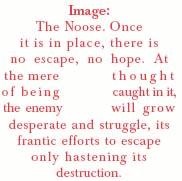
Summary:
The document analyzes the strategic principles of enveloping the enemy, exemplified through the Zulu wars against the British in the late 19th century, particularly focusing on the battle of Isandlwana, where the Zulu employed encirclement tactics to achieve a decisive victory despite the British forces' technological superiority.
Outline
- 1. Introduction to Enveloping the Enemy
- 1.1 Definition of the Annihilation Strategy
- 1.2 Importance of Psychological Tactics
- 2. Historical Context of the Zulu Wars
- 2.1 British Invasion of Zululand
- 2.2 Shaka Zulu's Military Innovations
- 3. The Battle of Isandlwana
- 3.1 Colonel Durnford's Actions
- 3.1.1 Advancement towards Isandlwana
- 3.2 Zulu Tactics: The Horns of the Beast
- 3.3 Outcome of the Battle
- 4. Interpretation and Lessons Learned
- 4.1 Analysis of Tactical Discrepancies
- 4.2 Impact of Psychological Warfare on Military Outcomes
Glossary
| Term | Definition |
|---|---|
| Term | Envelop |
| Definition | To surround an enemy force, applying pressure from all sides to restrict their movements and resources. |
| Term | Annihilation Strategy |
| Definition | A military approach aimed at completely destroying the enemy force, leaving no capacity for counterattack. |
| Term | Assegai |
| Definition | A type of spear developed by the Zulus, characterized by its heavy, broad blade suited for close combat. |
| Term | Psychological Encirclement |
| Definition | A tactic aimed at overwhelming the enemy mentally, causing confusion, fear, and eventual collapse through relentless pressure. |
| Term | Rorke's Drift |
| Definition | A defensive post held by British forces that became notable for its resistance against Zulu attacks during the Anglo-Zulu War. |
| Term | Isandlwana |
| Definition | The site of a significant battle between British forces and the Zulu army on January 22, 1879, resulting in a devastating defeat for the British. |
| Term | Horns of the Beast |
| Definition | A formation used by the Zulus in battle, involving an offensive line shaped like horns that encircles the enemy. |
| Term | Cleansing Rituals |
| Definition | Cultural practices among the Zulu that require warriors to undergo purification after combat, rendering them vulnerable. |

Summary:
This document explores the principles of maneuver warfare, emphasizing the importance of strategy that weakens opponents before engaging in conflict, as articulated by historical figures like Sun-tzu and Napoleon Bonaparte. It outlines the distinctions between maneuver warfare and attrition warfare, advocating for tactical flexibility, the creation of dilemmas for opponents, and the psychological aspects of combat, suggesting that effective maneuvering can lead to victory with minimal direct confrontation.
Outline
- 1. Introduction to Maneuver Warfare
- 1.1 Definition and Importance
- 1.2 Comparison with Attrition Warfare
- 2. Historical Context
- 2.1 Ancient and Modern Examples
- 2.2 Influences of Sun-tzu and Napoleon
- 3. Principles of Maneuver Warfare
- 3.1 Crafting a Flexible Plan
- 3.2 Allowing for Mobility and Space
- 3.3 Creating Dilemmas for Opponents
- 3.4 Generating Controlled Disorder
- 4. Case Study: Napoleon at Marengo
- 4.1 Campaign Background
- 4.2 Strategy and Adaptability
- 4.3 Outcomes and Implications
Glossary
| Term | Definition |
|---|---|
| - **Maneuver Warfare** | A strategy focused on undermining an enemy's position and morale before actual fighting occurs, contrasting with direct, attritional engagement. |
| - **Attrition Warfare** | A strategy that seeks to defeat an enemy through direct loss of personnel and resources over time, typically through sustained military engagement. |
| - **Dilemma** | A situation in which an opponent faces multiple negative choices as a result of strategic maneuvering, complicating their ability to respond effectively. |
| - **Chaos** | A state of confusion and disorder among opponents that can be exploited to gain a strategic advantage. |
| - **Psychological Pressure** | The mental strain placed on opponents as a result of successful maneuvering, potentially leading to their premature surrender or poor decision-making. |
| - **Branches** | Options within a strategic plan that allow for adjustment to evolving circumstances and enemy actions. |
| - **Preemptive Action** | Engaging in actions to neutralize or disarm an enemy before a conflict begins, often seen as a hallmark of maneuver warfare. |
| - **Dislocation** | The act of rendering an enemy's forces ineffective by disrupting their positioning before combat. |

Summary:
The document analyzes negotiation strategies through historical examples, emphasizing the importance of maintaining a strong position and using manipulation to achieve power and concessions, showcasing figures such as Philip II of Macedon and the diplomatic maneuvering surrounding the Greek independence movement.
Outline
- 1. Introduction to Negotiation Strategies
- 1.1 Overview of Historical Contexts
- 1.2 Purpose of Negotiation in Power Dynamics
- 2. Case Study: Philip II of Macedon
- 2.1 Initial Conquests and Diplomatic Maneuvering
- 2.2 The Peace of Philocrates
- 2.3 Outcomes and Long-term Effects
- 3. Case Study: Greek Independence Movement
- 3.1 Role of Russian Foreign Minister Capo d'Istria
- 3.2 Interactions with Austrian Minister Metternich
- 3.3 Consequences of Failed Negotiations
- 4. Strategic Takeaways
- 4.1 Importance of Positioning in Negotiations
- 4.2 Mixing Diplomacy with Deceptive Tactics
- 4.3 Lessons from Historical Examples
Glossary
| Term | Definition |
|---|---|
| 1. **Diplomatic-War Strategy** | A negotiation approach that views discussions as extensions of conflict, focusing on maintaining and advancing power rather than straightforward agreements. |
| 2. **Athenian Alliance** | The historical partnerships formed by Athens with various city-states to bolster its military and political might, particularly against external threats. |
| 3. **Peace of Philocrates** | A treaty negotiated between Philip II of Macedon and Athens that was intended to secure peace and stability but was ultimately manipulated by Philip to his advantage. |
| 4. **Hellenic League** | A confederation of Greek city-states united under Macedonian leadership, primarily to facilitate collective military action against external enemies, particularly Persia. |
| 5. **Machiavellian Tactics** | The use of cunning, deceit, or manipulation in political or diplomatic negotiations, often disregarding moral considerations for strategic advantage. |
| 6. **Protectionism** | The policy or practice of supporting a particular nation or group of nations, often in the context of political or military interests, as seen with Russia's interest in Greece against the Ottomans. |
| 7. **Concessions** | Compromises made during negotiations where one party gives up something of value, often to secure a broader agreement or resolve conflict. |
| 8. **Superpower Dynamics** | The interplay and competition between dominant nations, influencing their diplomatic and military strategies, as exemplified by interactions between Russia and Austria. |

Summary:
The document discusses the significance of effective endings in various contexts, particularly focusing on the Soviet invasion of Afghanistan as a case study of a poorly executed gamble that lacked an exit strategy, leading to long-lasting implications for the nation and its leaders.
Outline
- 1. Introduction
- 1.1 Importance of Ending Things Well
- 1.2 Overview of Exit Strategies
- 2. Case Study: Soviet Invasion of Afghanistan
- 2.1 Background and Motivation
- 2.2 Initial Success and Subsequent Challenges
- 2.3 Escalation of Conflict and Consequences
- 3. Strategic Lessons Learned
- 3.1 Risks vs. Gambles
- 3.2 The Importance of an Exit Strategy
- 3.3 Recommendations for Future Engagements
Glossary
| Term | Definition |
|---|---|
| 1. **Exit Strategy** | A plan for concluding an engagement, especially in conflict situations, ensuring a favorable outcome and minimizing negative repercussions. |
| 2. **Gamble** | An action taken with uncertain outcomes, usually involving high stakes, where failure can lead to severe consequences. |
| 3. **Mujahideen** | Islamist guerrilla fighters in Afghanistan who resisted Soviet occupation, gaining support from external countries and resulting in a prolonged conflict. |
| 4. **Politburo** | The principal policymaking committee in the Soviet Union, composed of senior members who governed and made significant political decisions. |
| 5. **Insurgent** | A person who rises in revolt against an established authority or government, typically in a violent manner, as seen with Afghan rebels against the Soviet-backed regime. |
| 6. **Phased Withdrawal** | A strategic process of gradually pulling back forces from a conflict area to minimize chaos and maintain stability. |
| 7. **Coup** | A sudden, violent, and illegal seizure of power from a government, as occurred in Afghanistan with Soviet support. |
| 8. **Client State** | A country that is politically, economically, or militarily subordinate to another, more powerful nation. |

Summary:
The document discusses the concept of "dirty warfare," highlighting the strategies of deception, manipulation, and ambiguity employed in unconventional warfare throughout history, particularly in the context of World War II, and illustrates methods for confusing and misdirecting the enemy to gain strategic advantages.
Outline
- 1. Unconventional Warfare
- 1.1 Overview of Dirty Warfare
- 1.2 Historical Context
- 1.2.1 World War II Strategies
- 2. Misperception Strategies
- 2.1 Controlling Perceptions
- 2.2 Case Study: The False Mirror and Hitler
- 2.2.1 Directive 51
- 2.2.2 Allied Deception Campaign
- 3. Conclusion
- 3.1 Implications for Modern Warfare
- 3.2 Lessons Learned
Glossary
| Term | Definition |
|---|---|
| **Dirty Warfare** | A form of conflict characterized by political manipulation, deception, and the use of morally questionable tactics, often involving civilian casualties. |
| **Misperception Strategies** | Techniques aimed at distorting an enemy's understanding of reality to weaken their strategic capabilities. |
| **False Mirror** | A deceptive tactic that causes the enemy to perceive a false reality, aligning with their hopes or expectations. |
| **Deception Campaign** | An organized effort to mislead an enemy regarding one's true intentions or capabilities. |
| **Atlantic Wall** | A German defense system of fortifications along the western coast of Europe during World War II. |
| **FUSAG (First United States Army Group)** | A fictitious American military formation created to mislead the Germans regarding the expected location of an Allied invasion. |
| **Double Agent** | A spy who pretends to work for one side while secretly working for the opposing side. |
| **Guerrilla Warfare** | A form of irregular warfare that relies on small, mobile groups of combatants to conduct hit-and-run attacks against larger traditional military forces. |

Summary:
This document discusses the principles of unconventional warfare, emphasizing the importance of surprising opponents by combining ordinary and extraordinary tactics to upset their expectations, creating chaos and vulnerability. It describes historical examples illustrating these strategies and the necessity for continuous adaptation in response to changing conditions, whether in military contexts, politics, or culture.
Outline
- 1. Introduction to Unconventional Warfare
- 1.1 The Importance of Surprise
- 1.2 Historical Context and Evolution
- 2. Principles of Unconventional Warfare
- 2.1 Work Outside the Enemy's Experience
- 2.2 Unfolding the Extraordinary from the Ordinary
- 2.3 Acting Irrationally to Create Chaos
- 2.4 Keeping Strategies in Constant Motion
- 3. Historical Examples
- 3.1 Hannibal's Campaign Against Rome
- 3.2 Fabius Maximus's Strategic Adaptation
- 3.3 Napoleon's Tactical Innovations
- 4. The Spiral of Adaptation
- 4.1 The Cycle of Innovation and Counter-innovation
- 4.2 Cultural Implications of Unconventionality
- 5. Conclusion: Mastering Unconventional Strategies
Glossary
| Term | Definition |
|---|---|
| 1. **Unconventional Warfare** | Military strategies that deviate from established norms or conventional tactics to gain an advantage over opponents. |
| 2. **Surprise** | A critical element in warfare that disrupts the enemy's expectations and leads to confusion. |
| 3. **Chaos** | A state of complete disorder and unpredictability, often used strategically to unsettle an opponent. |
| 4. **Guerrilla Tactics** | Irregular warfare where small groups use surprise attacks and mobility to fight a larger, traditional army. |
| 5. **Psychological Warfare** | Tactics designed to influence the psyche of opponents and undermine their morale. |
| 6. **Stratagem** | A plan or scheme, especially one used to outwit an opponent. |
| 7. **Adaptation** | The process of adjusting strategies in response to new information or changing circumstances. |
| 8. **Banal** | Lacking in originality or freshness; commonplace or ordinary. |
| 9. **Elemental Psychology** | Basic psychological principles that govern human behavior and reactions in various contexts. |

Summary:
This document discusses the strategic use of morality in political conflicts, illustrating how figures like Martin Luther successfully leveraged moral arguments to gain public support and undermine opponents, specifically detailing the historical context of Luther's challenges to the Catholic Church and the implications of such moral warfare tactics.
Outline
- 1. Introduction to the Concept of Moral Warfare
- 1.1 The Importance of Perception in Political Conflicts
- 1.2 Historical Context of Morality in Warfare
- 2. The Case of Pope Leo X and Martin Luther
- 2.1 The Campaign for Indulgences
- 2.2 The Challenge of Luther’s Ninety-five Theses
- 2.2.1 Initial Reactions from the Church
- 2.2.2 The Evolution of the Conflict
- 3. Strategies for Moral Offense
- 3.1 Attacking Adversaries' Credibility
- 3.2 Leveraging Public Sentiment
- 3.3 Creating and Seizing the Narrative
- 3.3.1 The Role of Printing Technology
- 3.3.2 Baiting Opponents into Counterattacks
- 4. The Outcomes of Moral Strategy in Conflict
- 4.1 The Rise of the Protestant Movement
- 4.2 Long-term Implications for Church Power and Governance
- 4.3 Lessons for Modern Political Conflicts
Glossary
| Term | Definition |
|---|---|
| 1. Indulgences | Payments made to the Catholic Church for the reduction of punishment for sins, believed to absolve guilt and lessen time in purgatory. |
| 2. Heresy | A belief or opinion that deviates from established religious doctrine, often considered a serious offense by the church. |
| 3. Moral High Ground | A position of moral superiority from which one can attack others' ethics or motives while portraying oneself as virtuous. |
| 4. Reformation | The movement in the 16th century that aimed at reforming the beliefs and practices of the Roman Catholic Church, leading to the establishment of Protestant churches. |
| 5. Propaganda | Information, especially biased or misleading, used to promote a political cause or point of view. |
| 6. Psychological Warfare | The use of psychological tactics to manipulate and control public perception and morale in conflict situations. |
| 7. Martyr | A person who suffers persecution and death for advocating, renouncing, or refusing to renounce a belief or cause. |
| 8. Papal Bull | An official decree issued by the Pope, often addressing significant matters of church doctrine or governance. |

Summary:
This document examines Napoleon Bonaparte's failed invasion of Russia in 1812, highlighting the strategic advantages of guerrilla warfare and the psychological impact of the void on an opponent's military strategy, ultimately demonstrating how the Russian army's elusive tactics contributed to the catastrophic defeat of the French forces.
Outline
- 1. Introduction
- 1.1 Overview of the Strategy of the Void
- 1.2 Importance of Psychological Factors in Warfare
- 2. The Context of Napoleon's Invasion
- 2.1 Historical Background
- 2.2 Strategic Planning and Expectations
- 3. The Campaign in Russia
- 3.1 Initial Military Movements
- 3.2 Challenges Faced by the French Army
- 3.3 The Use of Scorched Earth by the Russians
- 4. The Turning Point
- 4.1 Significance of the Battles: Smolensk and Borodino
- 4.2 Impact of the Harassment by Cossack Forces
- 5. The Aftermath
- 5.1 Retreat from Moscow
- 5.2 Long-term Consequences for Napoleon and France
- 6. Theoretical Insights on Guerrilla Warfare
- 6.1 Principles of the Void Strategy
- 6.2 Historical Examples and Lessons Learned
Glossary
| Term | Definition |
|---|---|
| Guerrilla Warfare | A form of irregular warfare where small groups of combatants use tactics like ambushes, raids, and hit-and-run attacks to fight a larger and less-mobile traditional army. |
| Theater of War | A specific geographical area where military operations and battles take place. |
| Scorched-Earth Policy | A tactic used by a retreating army to destroy resources that could be used by the advancing enemy, resulting in empty lands devoid of supplies. |
| Strategist | A military leader or planner who formulates and implements strategies to achieve victory in war. |
| Psychological Warfare | Combat strategies aimed at influencing the morale and psychological state of the enemy rather than through direct military engagement. |

Summary:
This document examines the strategic use of alliances in historical contexts, focusing on Charles the Bold's interactions with King Louis XI of France and the Swiss cantons, illustrating how alliances can be exploited for personal gain while minimizing direct conflict. It emphasizes the importance of selecting the right allies, understanding the dynamics of dependence, and the implications of false alliances.
Outline
- 1. Introduction to Alliance Strategy
- 1.1 Definition and Importance
- 1.2 Historical Context and Examples
- 2. Case Study: Charles the Bold and King Louis XI
- 2.1 Background on Charles the Bold
- 2.2 The Role of the Swiss Cantons
- 2.3 Charles’s Ambition and Strategy
- 3. The Downfall of Charles the Bold
- 3.1 Military Engagements with the Swiss
- 3.2 The Betrayal by Edward IV
- 3.3 Consequences of Charles's Isolation
- 4. Lessons on Alliances
- 4.1 Choosing Quality Allies
- 4.2 The Nature of Dependence
- 4.3 Recognizing False Alliances
- 5. Practical Applications and Conclusions
- 5.1 Strategies for Modern Alliances
- 5.2 The Importance of Differentiation in Relationships
- 5.3 Final Thoughts on Alliance Dynamics
Glossary
| Term | Definition |
|---|---|
| **Alliance Strategy | ** A method of forming partnerships with other individuals or groups to achieve mutual goals while advancing one's own interests. |
| **Baiting | ** A tactic used to provoke an opponent into making rash decisions that can be exploited later. |
| **Phalanx | ** A military formation consisting of soldiers arranged close together in rows, typically known for its strength and discipline. |
| **Self-Interest | ** The personal advantage one seeks in a relationship or alliance, often guiding decision-making and negotiations. |
| **False Alliance | ** A relationship that appears beneficial but is fundamentally based on deceit or differing interests, often leading to betrayal. |
| **Differentiation | ** The process of establishing an individual identity apart from family dynamics or group influences. |
| **Anxiety Wave | ** A phenomenon in family systems where a triggering event causes a ripple of emotional turmoil that impacts family members' well-being. |

Summary:
This document discusses the concept of one-upmanship as a strategy for managing internal rivals and colleagues in competitive environments, emphasizing the importance of inducing self-doubt and insecurity in rivals to provoke their self-destructive behavior while maintaining one's own reputation and standing.
Outline
- 1. Introduction to One-Upmanship
- 1.1 Definition and Importance
- 1.2 Context of Internal Rivalries
- 2. Understanding Rivals
- 2.1 Gathering Intelligence
- 2.2 Identifying Flaws and Weaknesses
- 3. Strategy and Techniques
- 3.1 Pricking Wounds and Creating Doubts
- 3.2 Use of Covert Actions and Rumors
- 3.3 Allowing Rivals to Self-Destruct
- 4. Historical Examples
- 4.1 Case Study: John A. McClernand and Ulysses S. Grant
- 4.2 Case Study: The Bishop of Noyon and Abbe de Caumartin
- 5. Conclusion
- 5.1 Summary of Techniques
- 5.2 Final Thoughts on Navigating Rivalries
Glossary
| Term | Definition |
|---|---|
| 1. **One-Upmanship** | The art of establishing oneself in a superior position compared to others in social or professional interactions, often through subtle manipulation. |
| 2. **Self-Destruction** | The process by which individuals undermine their own success or position, often as a result of defensive or overreactive behavior. |
| 3. **Defensive Behavior** | Actions taken by individuals in response to perceived threats to their status or self-esteem, leading to anxiety, aggression, or withdrawal. |
| 4. **Internal Warfare** | The conflict that arises among individuals within the same organization or group, often characterized by manipulation and competition for status or recognition. |
| 5. **Subtle Challenge** | A tactic used to create doubt or insecurity in a rival without appearing confrontational or aggressive. |

Summary:
This document discusses the "fait accompli" strategy, which involves taking small, incremental actions to accumulate power and territory without inciting resistance. It illustrates the effectiveness of this strategy through the historical example of General Charles de Gaulle, who established his authority and influence during World War II by gradually gaining public support and control over Free France and the Resistance.
Outline
- 1. The Fait Accompli Strategy
- 1.1 Overview
- 1.2 Rationale Behind the Strategy
- 2. Historical Example: General Charles de Gaulle
- 2.1 Initial Context
- 2.2 De Gaulle's Early Actions
- 2.2.1 BBC Broadcasts
- 2.2.2 Establishing Fighting France
- 2.3 Piecemeal Conquest of Territories
- 2.3.1 African Colonies
- 2.3.2 Gaining Control of the French Resistance
- 3. Key Principles and Applications
- 3.1 Gradual Accumulation of Power
- 3.2 Psychological Aspects of Conquest
- 3.3 The Importance of Timing and Opportunity
- 3.4 Learning from Film and Leadership Examples
Glossary
| Term | Definition |
|---|---|
| - **Fait Accompli** | A French term meaning "an accomplished fact"; an action that has been completed and cannot be altered. |
| - **Piecemeal Conquest** | A strategy of gradual acquisition of power or territory through small, deliberate actions. |
| - **Resistance** | The organized effort by a group to oppose and resist an occupying force, particularly referring to the French Resistance during World War II. |
| - **Bite** | A metaphorical term for a small, manageable action or acquisition in the context of strategic gain. |
| - **Status Quo** | The existing state of affairs or condition which is often accepted as the norm and not challenged. |
| - **Conservative Instincts** | The tendency of individuals or groups to prefer maintaining the current state of affairs and avoid risks associated with conflict or change. |

Summary:
The document discusses effective communication strategies through the lens of notable figures, particularly Alfred Hitchcock and Niccolo Machiavelli, emphasizing the importance of indirect influence, visceral communication, and the alteration of experiences to penetrate the defenses of audiences or subjects.
Outline
- 1. Introduction to Communication as Warfare
- 1.1 The Nature of Influence
- 1.1.1 Techniques to Penetrate Defensive Minds
- 2. Case Study: Alfred Hitchcock
- 2.1 Directing Style and Communication
- 2.1.1 Creating Emotional Experiences
- 2.2 Examples from Films
- 2.2.1 The Use of Action over Words
- 3. Case Study: Niccolo Machiavelli
- 3.1 Political Strategy and Persuasion
- 3.1.1 The Importance of Experiences in Persuasion
- 3.2 Works and Impact
- 3.2.1 The Prince and The Discourses
- 4. Conclusion
- 4.1 Principles for Effective Communication Strategies
- 4.1.1 Elevating Influence through Indirect Methods
Glossary
| Term | Definition |
|---|---|
| 1. **Visceral Communication** | A method of conveying ideas through emotional engagement and sensory experiences rather than verbal explanations. |
| 2. **Defensive Minds** | The mental barriers individuals create to protect their preexisting beliefs and resist influence. |
| 3. **Radical Communication** | Strategies that challenge conventional methods to gain attention and influence people more effectively. |
| 4. **Infiltration of Ideas** | A technique involving the subtle introduction of concepts into someone’s mind, making them appear self-derived. |
| 5. **Indirect Influence** | Persuasion tactics that do not confront the audience head-on but instead lead them to conclusions through their experiences. |
| 6. **Childlike State** | A mental condition characterized by openness and receptiveness, facilitating easier influence and communication. |
| 7. **Preverbal Communication** | The conveyance of meaning through images and actions prior to or beyond language, affecting emotions deeply. |
| 8. **Machiavellian Tactics** | Political strategies, often viewed as cunning or deceitful, aimed at maintaining power and control. |

Summary:
The document explores strategies of internal infiltration for undermining adversaries, illustrated through historical accounts such as the Trojan Horse tactic in Greek mythology, Wilhelm Canaris's covert actions during World War II, and Salvador Dali’s controversial role in surrealism, demonstrating the effectiveness of seemingly benign maneuvers to achieve significant influence and control.
Outline
- 1. Strategies of Infiltration
- 1.1 Historical Context
- 1.1.1 Trojan Horse in Greek Mythology
- 1.1.2 Wilhelm Canaris and the German Abwehr
- 1.1.3 Salvador Dali in the Surrealist Movement
- 1.2 Methods of Internal Subversion
- 1.2.1 Joining Adversaries for Sabotage
- 1.2.2 Manipulating Enemy Strategies
- 1.3 Outcomes of Infiltration
- 1.3.1 Influence in Warfare
- 1.3.2 Shifts in Artistic Movements
Glossary
| Term | Definition |
|---|---|
| - **Infiltration** | The act of secretly entering an organization or movement to gather information or take control from within. |
| - **Coup d'etat** | A sudden, illegal seizure of government power, often executed by a small group or an individual. |
| - **Abwehr** | The German military intelligence service responsible for intelligence and counter-espionage during World War II. |
| - **Surrealism** | An art movement that sought to release the creative potential of the unconscious mind, characterized by unexpected juxtapositions and dream-like imagery. |
| - **Paranoid-critical method** | A technique developed by Salvador Dali, involving accessing the unconscious for surrealist inspiration. |
| - **Revolutionary** | Someone who advocates for or engages in the overthrow of a government or political system. |

Summary:
The document discusses the concept of passive-aggression as a strategy for submitting while actually dominating situations, emphasizing historical examples like Gandhi's Salt March, and illustrating how nonviolent resistance can exploit an opponent's moral framework to paralyze their responses.
Outline
- 1. Introduction to Passive-Aggression Strategy
- 1.1 Definition and Application
- 1.2 Historical Context
- 2. Gandhi and Passive Resistance
- 2.1 The Salt March Campaign
- 2.1.1 Overview of the Protest
- 2.1.2 Impact on British Governance
- 2.2 Reactions from British Authorities
- 2.2.1 Lord Irwin's Strategy
- 2.2.2 Consequences of Passive Resistance
- 3. Broader Implications of Passive-Aggression
- 3.1 Psychological Aspects of Power and Control
- 3.2 Examples from History
- 3.3 Conclusion on Nonviolent Resistance
Glossary
| Term | Definition |
|---|---|
| 1. Passive-Aggression | A form of indirect resistance or hostility where compliance is feigned while underlying resentment or aggression exists. |
| 2. Civil Disobedience | A nonviolent form of protest in which individuals refuse to comply with certain laws, demands, or commands of an authority. |
| 3. Viceroy | A ruler exercising authority in a colony on behalf of a sovereign. |
| 4. Salt Tax | A tax imposed on the production and sale of salt, which Gandhi protested during India's independence movement. |
| 5. Moral Purity | A self-image often held by individuals or groups, suggesting they operate under ethical principles that justify their actions. |
| 6. Strategic Wisdom | The ability to navigate complex situations by understanding and exploiting both one’s own strengths and an opponent's weaknesses. |
| 7. Nonviolence | A philosophy and strategy for social change that rejects the use of violence. |

Summary:
The document discusses the use of terror as a strategic tool for political power, emphasizing how sporadic acts of violence can foster panic and chaos within societies, thereby paralyzing their ability to respond effectively. Through historical examples, it explores the dynamics of fear and uncertainty, particularly how terror campaigns can create the illusion of omnipresence and lead to social and political destabilization.
Outline
- 1. Introduction to Terror as Strategy
- 1.1 Definition and Purpose
- 1.2 Historical Context
- 2. The Anatomy of Panic
- 2.1 Case Study: Nizam al-Mulk and the Ismailis
- 2.2 The Impact of Assassination on Political Structure
- 2.3 Sociopolitical Consequences of Fear
- 3. Mechanisms of Terror
- 3.1 Psychological Manipulation
- 3.2 Historical Examples of Terror Tactics
- 3.2.1 Mongol Strategy
- 3.2.2 French Revolution and the Reign of Terror
- 4. Implications of Terrorism
- 4.1 Differentiation Between Groups
- 4.2 Evolution of Terror Tactics and Technology
- 4.3 The Role of Ethics in Terrorism
Glossary
| Term | Definition |
|---|---|
| 1. Terror | A strategic use of violence designed to instill fear, disrupt social order, and elicit panic among a targeted population or group. |
| 2. Nizari Ismailis | A sect within Islam known for its secretive operations and political assassinations, particularly during the late 11th century under their leader Hasan-i-Sabah. |
| 3. Assassination | The targeted killing of a prominent individual, often for political purposes, designed to create fear and chaos within a larger system. |
| 4. Panic | A sudden overwhelming fear that disrupts rational thought and can cause individuals or groups to act irrationally. |
| 5. Chain-reaction strategy | A method employed by terror groups that seeks to create a series of reactions, amplifying fear and isolation within the target population. |
| 6. Psychological warfare | Techniques intended to weaken the resolve of opponents and manipulate their emotions, typically through fear-inducing actions. |